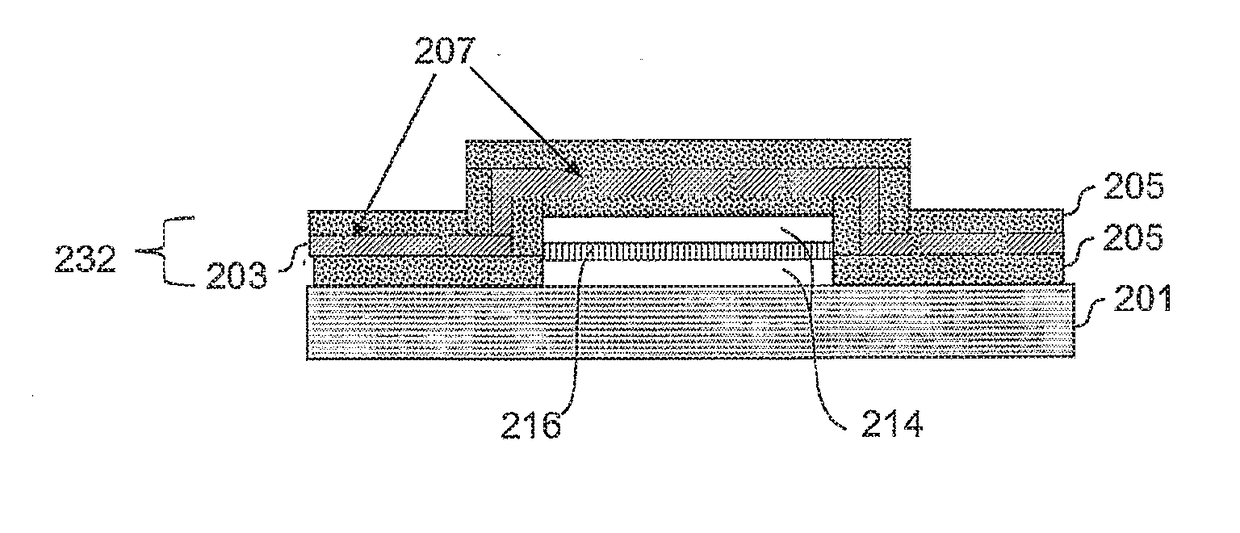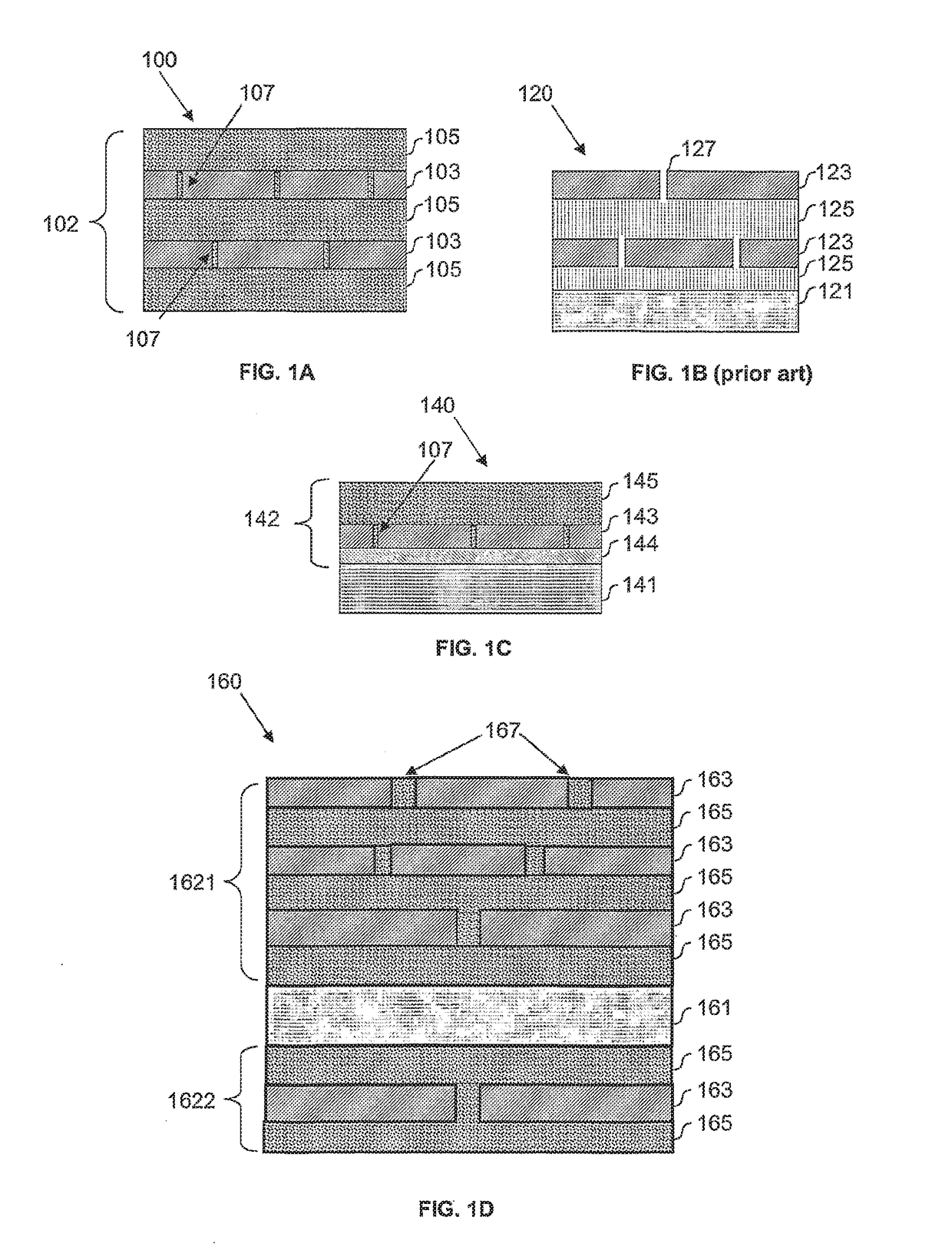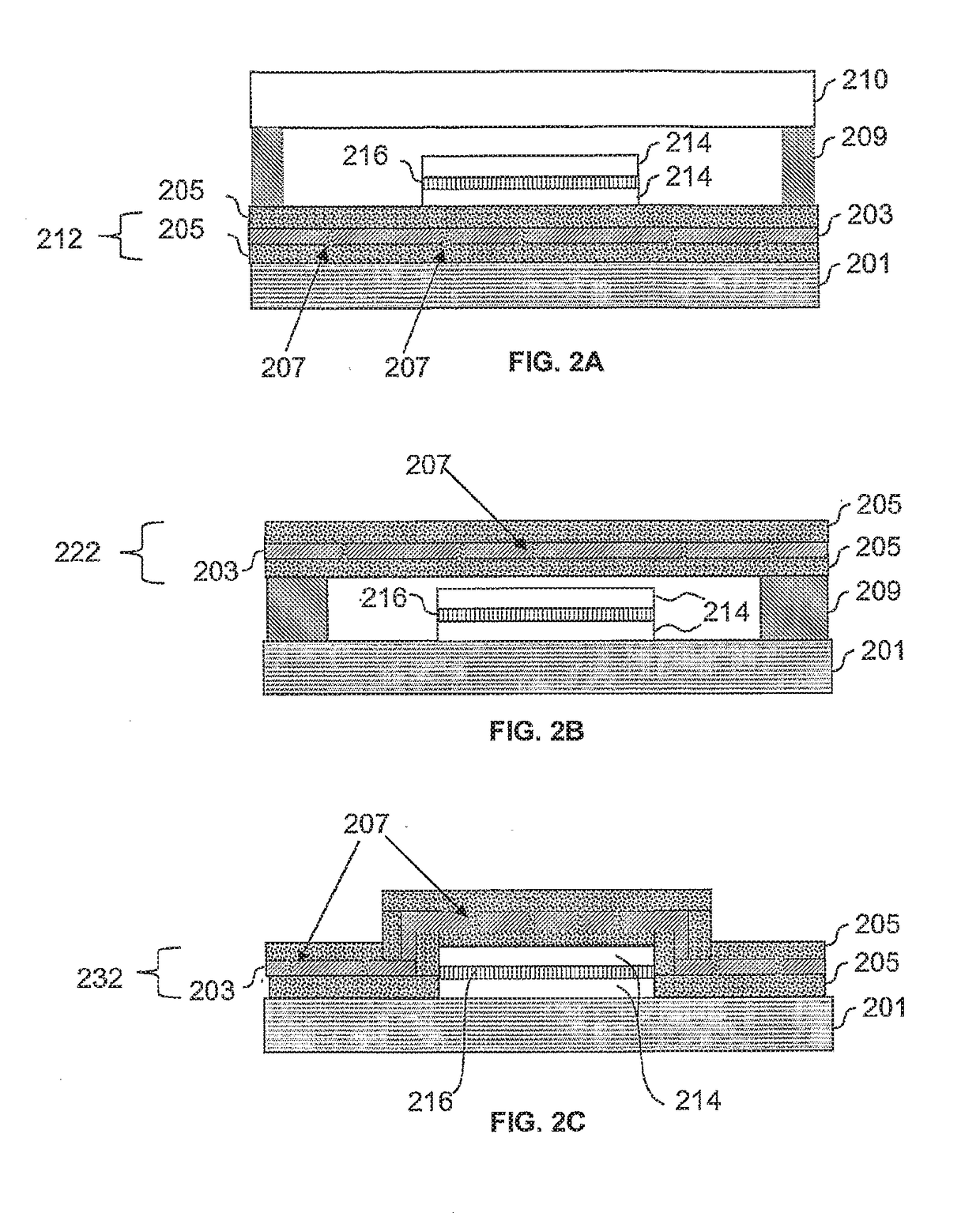Nanoparticulate encapsulation barrier stack
a technology of encapsulation barrier and nanoparticulate, which is applied in the direction of transportation and packaging, organic semiconductor devices, synthetic resin layered products, etc., can solve the problems of encapsulation technology not keeping pace with oled technology development, rapid deformation of atmospheric conditions, and inability to adapt to applications. , to achieve the effect of reducing the lateral diffusion of oxygen/moistur
- Summary
- Abstract
- Description
- Claims
- Application Information
AI Technical Summary
Benefits of technology
Problems solved by technology
Method used
Image
Examples
example 1
on and Characterisation of Encapsulation Barrier Stacks with Sealing Layer Comprising Metal Oxide Nanoparticles
a) Synthesis of Encapsulation Barrier Stacks a, B and C
[0083]As an illustrative example, three different encapsulation barrier stacks each comprising different nanoparticles in the sealing layer were fabricated. Each of the encapsulation barrier stacks were made according to the following specification:
Stack A
[0084]1. Base substrate—Polycarbonate film (188 km thick)[0085]2. Planarizing layer—Plain acrylic polymer[0086]3. First Barrier layer—ITO (indium tin oxide)[0087]4. Sealing layer—aluminium oxide nanoparticle[0088]5. Second barrier layer—ITO
Stack B
[0089]1. Base substrate—Polycarbonate film (188 μm thick)[0090]2. Planarizing layer—Plain acrylic polymer[0091]3. First Barrier layer—ITO[0092]4. Sealing layer—titanium oxide nanoparticle[0093]5. Second barrier layer—ITO
[0094]Stack C[0095]1. Base polymer Substrate—Polycarbonate film (188 km thick)[0096]2. Planarizing layer—Pla...
example 2
on and Characterisation of Encapsulation Barrier Stacks with Sealing Layer Comprising Carbon Nanotubes
[0131]The following encapsulation barrier stacks with differing carbon nanotube compositions in the sealing layers were prepared:
Stack E
[0132]1. Polycarbonate (188 μm) as base substrate[0133]2. ITO as barrier layer[0134]3. Nanostructured sealing layer with MCNTs at 0.006% concentration as sealing layer
Stack F
[0135]1. Polycarbonate (188 μm) as base substrate[0136]2. ITO as barrier layer[0137]3. Nanostructured sealing layer with MCNTs at 0.05% concentration as sealing layer
[0138]Pre-treated 10 nm diameter multiwalled nanotubes (hereinafter ‘MCNT’) were first added to a solution mixture of 2-methoxyethanol (2MOE) and ethylene glycol (EG) for dispersion. The ratio of 2MOE to EG is 1:1. The nanotubes were dispersed uniformly into the acrylic polymer via sonification. The synthesis was undertaken under inert gas environment.
[0139]Stack E comprises MCNT in the amount of 0.006% by weight, a...
PUM
 Login to View More
Login to View More Abstract
Description
Claims
Application Information
 Login to View More
Login to View More - R&D
- Intellectual Property
- Life Sciences
- Materials
- Tech Scout
- Unparalleled Data Quality
- Higher Quality Content
- 60% Fewer Hallucinations
Browse by: Latest US Patents, China's latest patents, Technical Efficacy Thesaurus, Application Domain, Technology Topic, Popular Technical Reports.
© 2025 PatSnap. All rights reserved.Legal|Privacy policy|Modern Slavery Act Transparency Statement|Sitemap|About US| Contact US: help@patsnap.com



